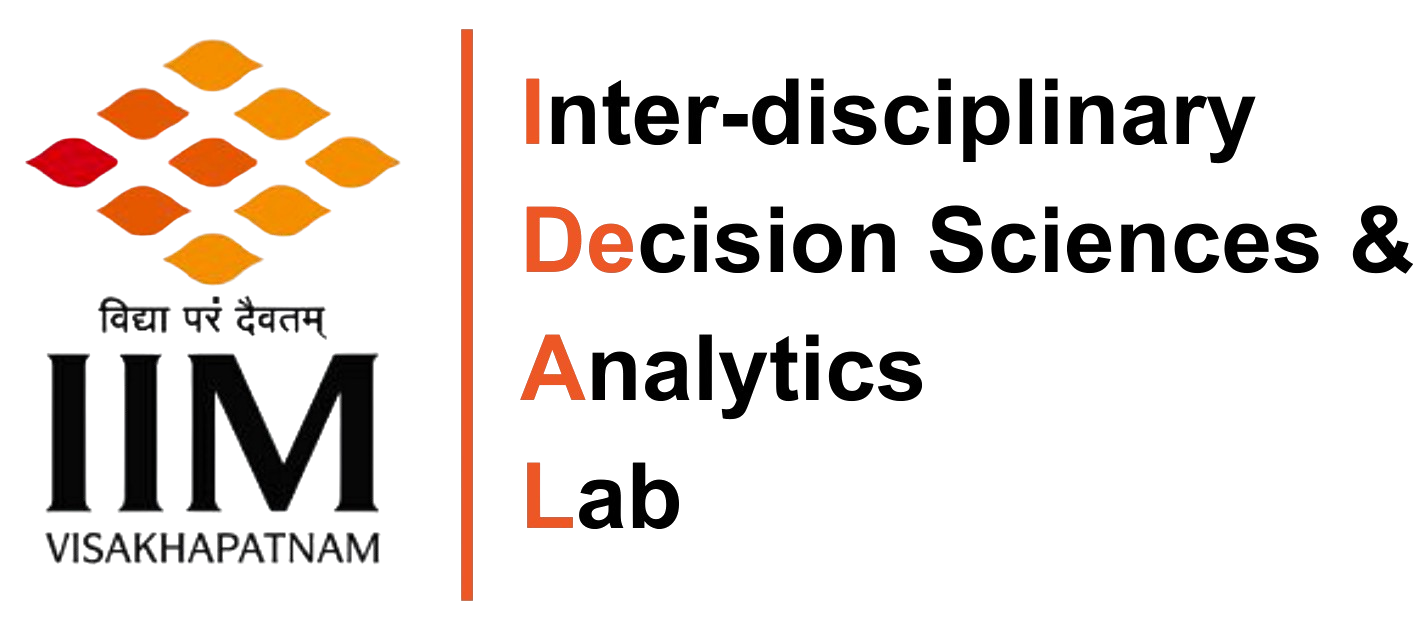Positions
Data Scientist – Research Associate
Duration: 1 Year
Location: IIM Visakhapatnam, Gambheeram Village, Anandapuram Mandal, Visakhapatnam – 531 163
Applications close on 22nd January 2025 (Wednesday) by 17:00 Hrs
Interested candidates are invited to apply using the prescribed application form available on Institute’s website and send the same by e-mail to head-ideal@iimv.ac.in. Applications submitted in any other format will not be accepted.
Advertisement Ref. No. IIMV/HR/RECTT./RA-IDeAL/01/2025 dated 07-01-2025
Qualification & Experience
- B.Tech. (Computer Science/ECE/Electronics/Mechanical) or M. Tech./M.Sc. (Mathematics/Statistics with major in Computer Programming)
- Proficiency in any basic programming language like C, C++, JAVA, Python, and/or R.
- Ability to work on advanced libraries and tools like OpenCV, AMPL, MATLAB, Oracle, and MySQL
- Knowledge of statistical and mathematical modeling, algorithm design and computational mathematics, fundamentals in Machine Learning, Artificial Intelligence and Deep Learning models and algorithms.
- Ability to work in inter-disciplinary areas of applied research e.g. Health care, natural resources and Cyber physical systems.
Job Description
- The long-term research agenda of lab is to develop new machine learning algorithms and Decision Support System (DSS) tools to use them for Health Care, Water resource management and publica policy.
- Applying machine learning, data mining, and network analysis to real-world problems in society and industry.
- Exploring the novel statistical and computational methods for machine learning, optimization as well as statistical modelling with complex data sets.
Research Intern
Duration: 3 Months
Location: IIM Visakhapatnam, Gambheeram Village, Anandapuram Mandal, Visakhapatnam – 531 163
Applications open until the position is filled
Please send your resume and writing sample of 1000 words on any topic of decision science to head-ideal@iimv.ac.in
Qualification & Experience
- UG, PG and PhD students in disciplines of Computer Science, Mathematics/Statistics, Engineering, etc.
- Demonstrate a strong mathematical, statistical modelling and programming skills (C++, Python).
- Ability to work in inter-disciplinary areas of applied research e.g. Health care, natural resources and Cyber physical systems.
Benefits
- Chance to develop skill to work on interdisciplinary decisions sciences.
- Improve your ability to define a research problem and come up with a solution on yourself.
- Certificate acknowledging your contribution to IDeAL (from Indian Institute of Management Visakhapatnam)
